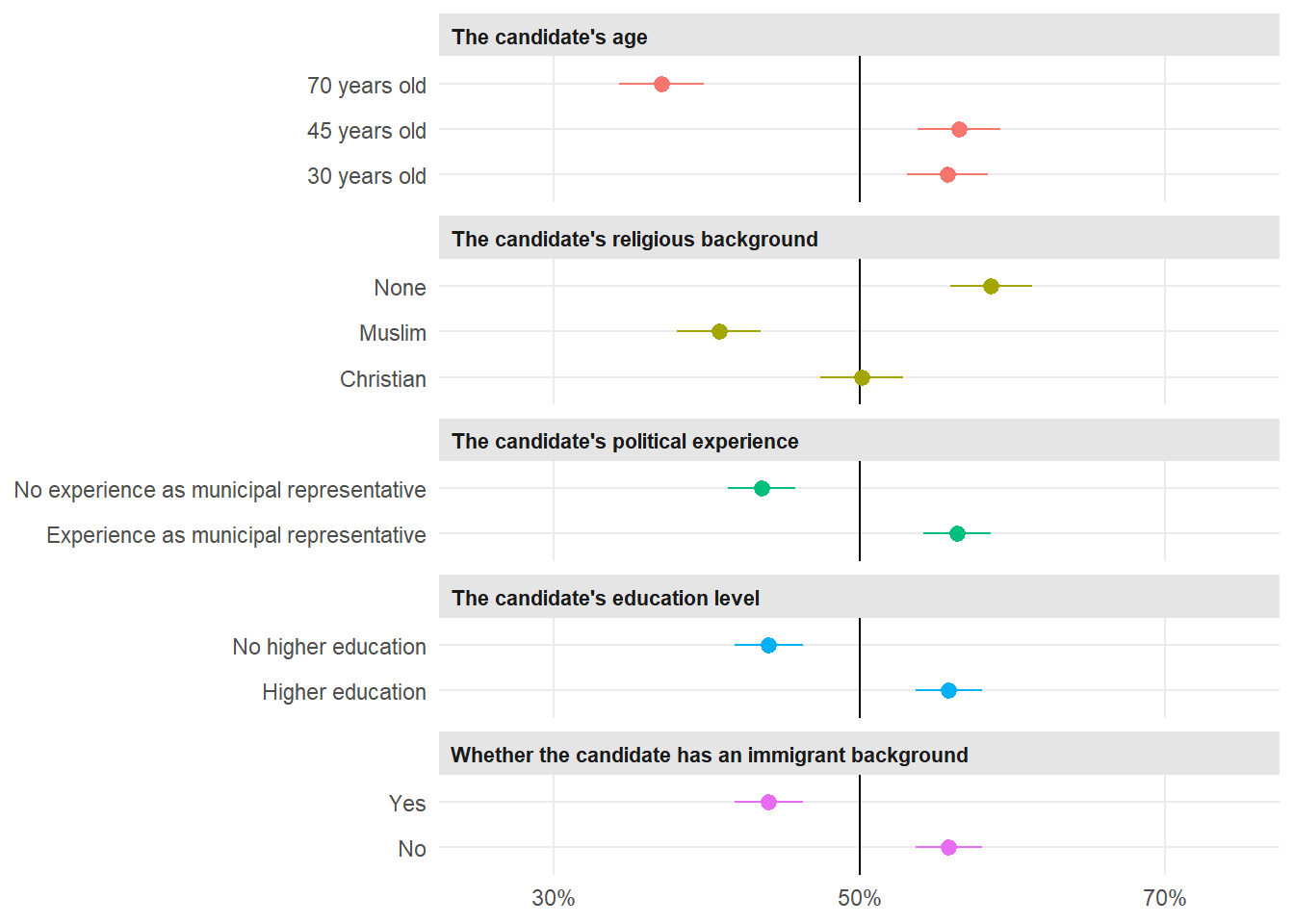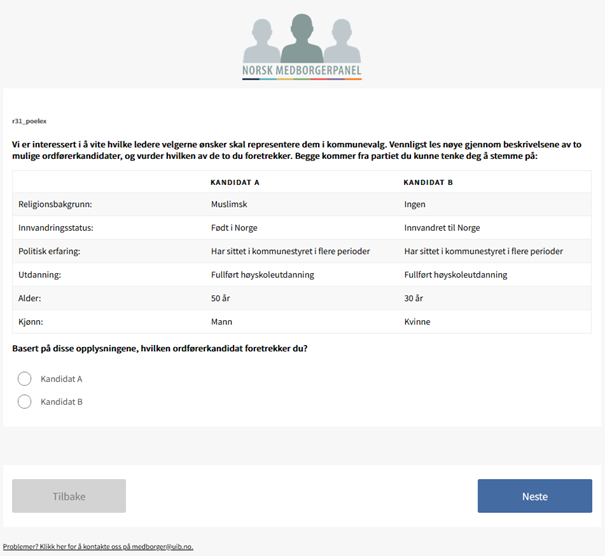Arnesen, Sveinung, Dominik Duell, and Mikael Poul Johannesson. 2019. “Do Citizens Make Inferences from Political Candidate Characteristics When Aiming for Substantive Representation?” Electoral Studies 57: 46–60.
Brady, Henry, and Paul Sniderman. 1985. “Attitude Attribution: A Group Basis for Political Reasoning.” American Political Science Review 79 (4): 1061–78.
Butler, Daniel M. 2014. Representing the Advantaged: How Politicians Reinforce Inequality. Cambridge University Press.
Carnes, Nicholas. 2012. “Does the Numerical Underrepresentation of the Working Class in Congress Matter?” Legislative Studies Quarterly 37 (1): 5–34.
Carnes, Nicholas, and Noam Lupu. 2023. “The Economic Backgrounds of Politicians.” Annual Review of Political Science 26.
Eshima, Shusei, and Daniel M Smith. 2022. “Just a Number? Voter Evaluations of Age in Candidate-Choice Experiments.” The Journal of Politics 84 (3): 1856–61.
Hainmueller, Jens, Dominik Hangartner, and Teppei Yamamoto. 2015. “Validating Vignette and Conjoint Survey Experiments Against Real-World Behavior.” Proceedings of the National Academy of Sciences 112 (8): 2395–2400.
Hainmueller, Jens, Daniel J Hopkins, and Teppei Yamamoto. 2014. “Causal Inference in Conjoint Analysis: Understanding Multidimensional Choices via Stated Preference Experiments.” Political Analysis 22 (1): 1–30.
Kirkland, Patricia A, and Alexander Coppock. 2018. “Candidate Choice Without Party Labels.” Political Behavior 40 (3): 571–91.
Leeper, Thomas J, Sara B Hobolt, and James Tilley. 2018. “Measuring Subgroup Preferences in Conjoint Experiments.”
Mansbridge, Jane. 1999. “Should Blacks Represent Blacks and Women Represent Women? A Contingent ‘Yes’.” The Journal of Politics 61 (03): 628–57.
Mathisen, Ruben B. 2024. “The Influence Gap: Unequal Policy Responsiveness to Men and Women.” The Journal of Politics 86 (4): 000–000.
McClean, Charles T, and Yoshikuni Ono. 2024. “Too Young to Run? Voter Evaluations of the Age of Candidates.” Political Behavior, 1–23.
Oosten, Sanne van, Liza Mügge, and Daphne van der Pas. 2024.
“Race/Ethnicity in Candidate Experiments: A Meta-Analysis and the Case for Shared Identification.” Acta Politica, 19–41. https://doi.org/
https://doi.org/10.1057/s41269-022-00279-y.
Schwarz, Susanne, and Alexander Coppock. 2022. “What Have We Learned about Gender from Candidate Choice Experiments? A Meta-Analysis of Sixty-Seven Factorial Survey Experiments.” The Journal of Politics 84 (2): 655–68.
Verba, Sidney, Kay Lehman Schlozman, and Henry Brady. 1995. Voice and Equality: Civic Voluntarism in American Politics. Harvard University Press.



